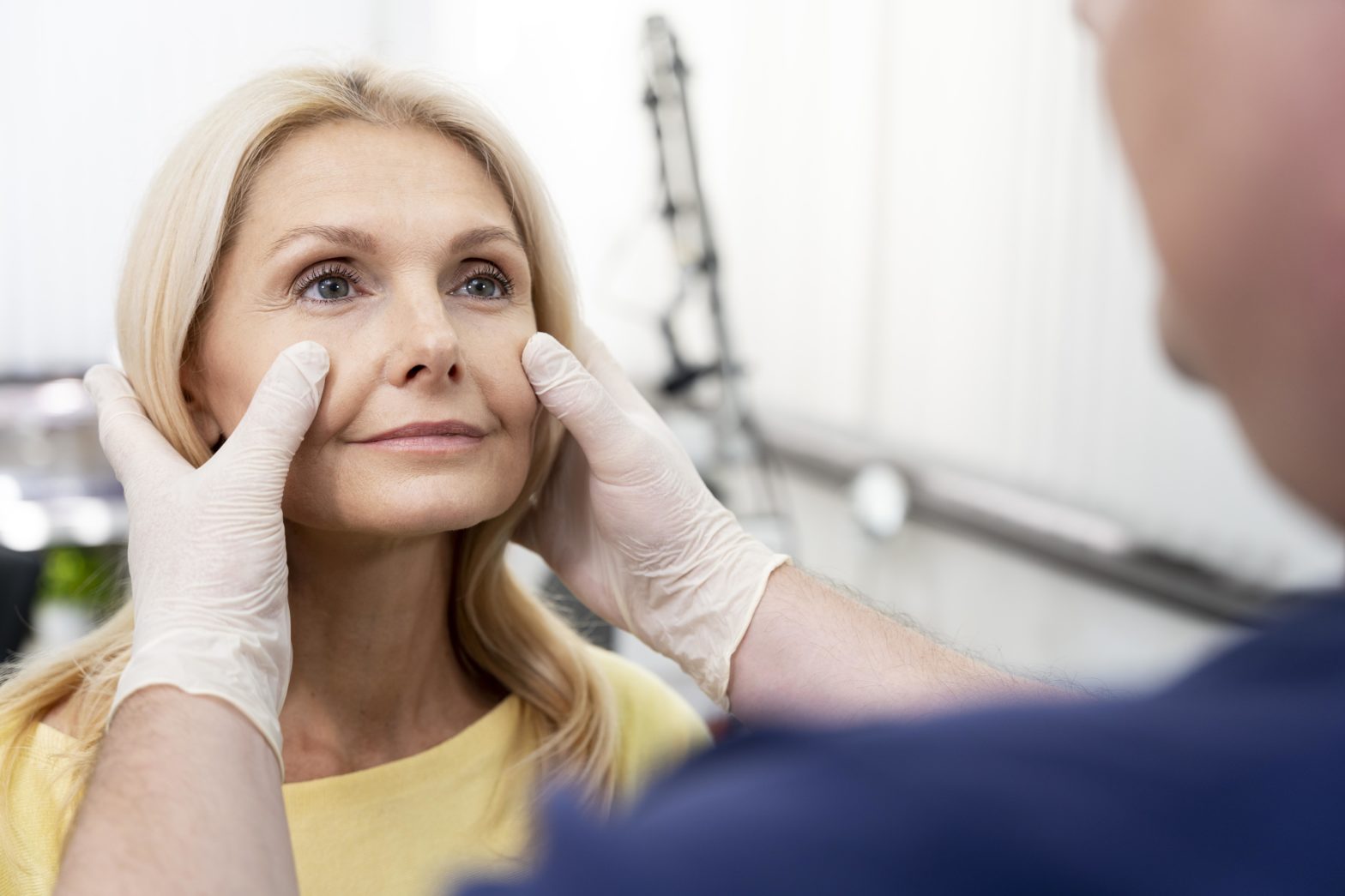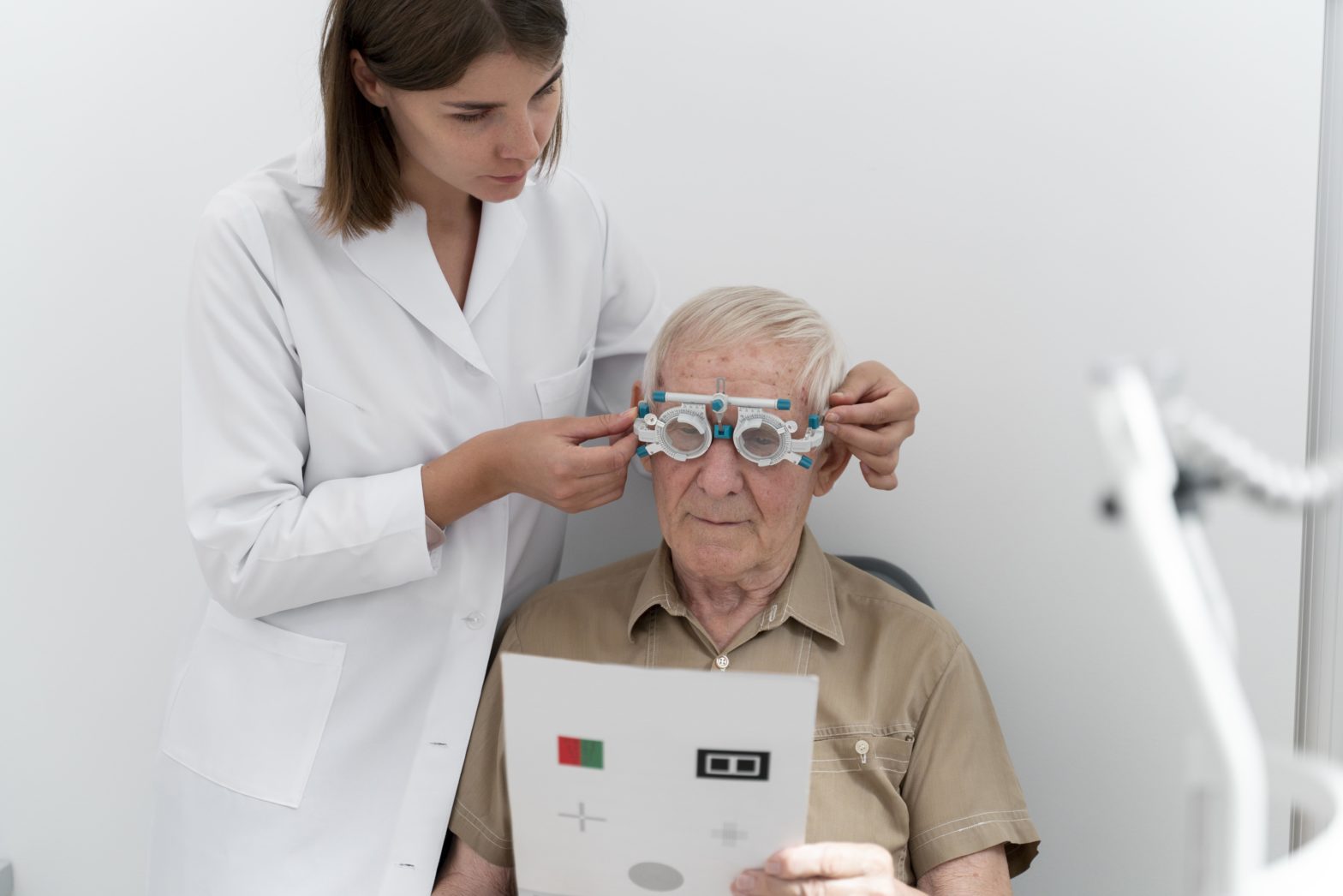Dark circles can be more than just a cosmetic issue; they might signal underlying health concerns. Many factors contribute to their appearance, and understanding these reasons is the first step toward addressing them effectively. If you’re wondering how to reduce dark circles permanently or alleviate post-cataract surgery light sensitivity issues, this guide will cover the causes, home remedies, and advanced treatment options.
What Are the Causes of Dark Circles Under Eyes?
Dark circles under the eyes can be caused by various factors, including:
- Lack of Sleep: Inadequate rest can cause blood vessels to dilate, leading to a darkened appearance under the eyes.
- ನಿರ್ಜಲೀಕರಣ: Insufficient water intake can make the skin appear dull and sunken.
- Aging: As skin ages, it loses collagen and thins, making the blood vessels underneath more visible.
- ಆನುವಂಶಿಕ: A hereditary predisposition to dark circles may be passed down through generations.
- ಅಲರ್ಜಿಗಳು: Histamine release can cause swelling and dark pigmentation around the eyes.
- Excessive Sun Exposure: UV exposure accelerates pigmentation and can worsen dark circles.
Poor Nutrition: Lack of essential vitamins such as Vitamin K, C, and iron can contribute to dark circles.
Dark circles under the eyes are a common concern caused by a variety of factors. Aging is a significant contributor, as the skin around the eyes becomes thinner over time, making blood vessels more visible. Genetics also play a role, as a predisposition to pigmentation or thinner skin can be inherited. Lifestyle choices such as lack of sleep, excessive screen time, and poor diet can exacerbate dark circles. Dehydration makes the skin appear dull, while allergies and nasal congestion can cause blood vessels under the eyes to enlarge. Additionally, excessive sun exposure increases melanin production, leading to hyperpigmentation. Stress, smoking, and alcohol consumption can also worsen the condition by affecting skin health and blood circulation. Addressing these factors through lifestyle changes, skincare, and proper rest can help reduce the appearance of dark circles.
How to Remove Dark Circles Under the Eyes?
ಜೀವನಶೈಲಿ ಬದಲಾವಣೆಗಳು
1. Adequate Sleep
Aim for 7-9 hours of sleep each night to prevent tired-looking eyes.
2. Hydration and Diet
Drink plenty of water and include vitamin-rich foods, especially those high in Vitamin C, K, and iron.
3. Limit Stress
Practice stress-reducing activities like yoga, meditation, or regular exercise.
4. Reduce Screen Time
Take frequent breaks from screens to avoid eye strain.
Home Remedies
1. Cold Compress
Applying a cold compress or chilled cucumber slices can reduce puffiness and constrict blood vessels.
2. Tea Bags
Caffeinated tea bags can help improve circulation and reduce swelling.
3. Aloe Vera Gel
Applying aloe vera soothes and hydrates the delicate under-eye skin.
Skincare Solutions
1. Use Eye Creams
Opt for creams containing retinol, hyaluronic acid, or Vitamin C to improve skin texture and pigmentation.
2. Sun Protection
Use sunscreen daily to prevent further pigmentation caused by UV rays.
Medical Treatments
1. Chemical Peels or Laser Therapy
These can lighten pigmentation and rejuvenate the skin.
2. Dermal Fillers
Fillers can address hollows caused by aging, making the area appear smoother.
3. Professional Consultation
A dermatologist can recommend tailored treatments based on the cause of your dark circles.
Effective Home Remedies for Dark Circles
Simple and effective home remedies for dark circles include:
Adequate Sleep
Prioritizing rest helps the body repair skin cells and reduce fatigue-related dark circles.
Cold Compresses
Helps to reduce swelling and improve blood circulation.
Sun Protection
Using SPF under the eyes prevents UV damage and pigmentation.
Reduce Alcohol and Smoking
Avoiding alcohol and tobacco helps prevent dehydration and oxidative stress that can worsen dark circles.
What Deficiency Causes Dark Circles Under Eyes?
Nutritional deficiencies play a significant role in the development of dark circles:
- Iron Deficiency: Anemia leads to poor oxygenation of tissues, making dark circles more prominent.
- Vitamin K Deficiency: Important for blood clotting and reducing bruising under the eyes.
- Vitamin C Deficiency: Weakens collagen production, making the skin under the eyes thinner and more prone to dark circles.
- Vitamin B12 Deficiency: Affects the production of red blood cells and can result in darkened skin around the eyes.
Lifestyle Changes to Prevent Dark Circles
Adopting healthy lifestyle habits can help prevent and reduce dark circles. These include:
1. Adequate Sleep
- Ensure 7-9 hours of quality sleep to allow the body to repair and rejuvenate the skin.
- Maintain a consistent sleep schedule to avoid fatigue-related dark circles.
2. Hydration and Diet
- Drink plenty of water daily to keep skin hydrated and plump.
- Include foods rich in antioxidants, vitamins, and minerals for skin health.
3. Limit Stress
- Practice relaxation techniques such as meditation and deep breathing to reduce stress-induced pigmentation.
4. Reduce Screen Time
- Limit prolonged exposure to screens to reduce eye strain and fatigue that contribute to dark circles.
How Many Types of Dark Circles Are There?
Dark circles can be classified into different types based on their appearance and underlying cause:
- Pigmented Dark Circles: Caused by excess melanin production and hyperpigmentation.
- Vascular Dark Circles: Due to visible blood vessels and poor circulation.
- Structural Dark Circles: Resulting from the loss of fat and collagen, creating hollows under the eyes.
- Mixed Dark Circles: A combination of the above types.
What Are the Medical Treatments for Dark Circles?
Several medical options are available for those seeking professional help:
Skin Lightening Creams
Prescribed creams containing hydroquinone or kojic acid can lighten dark pigmentation.
Laser Therapy
Non-invasive laser treatments target melanin deposits and stimulate collagen production.
PRP ಥೆರಪಿ
Platelet-rich plasma injections rejuvenate the under-eye area by promoting tissue repair.
Fillers for Volume Loss
Hyaluronic acid fillers restore lost volume and reduce the shadowing effect under the eyes.
ಬ್ಲೆಫೆರೊಪ್ಲ್ಯಾಸ್ಟಿ
Surgical removal of excess skin and fat to rejuvenate the under-eye area and eliminate dark circles.








